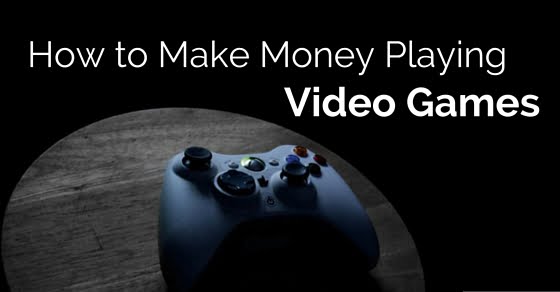Pokémon Go’s extraordinary ability to drive foot traffic to stores has captured the imagination of the business community. Instead of relying on traditional forms of marketing, many companies have tapped into gamers’ mindsets to boost revenue and increase customer bases.
But the idea of using games to motivate action among consumers and drive profits for companies is actually more than a century old. Starting with Cracker Jack promising a “toy surprise” in every box in 1912, the business world has a long history of using fun and games to sell products—long before augmented reality and artificial intelligence, there were Happy Meals and cereal box quizzes.
Building on reward concepts such as these, about a decade ago companies began to systematically use gaming techniques to drive business results. Many of these first attempts at “gamification” were clumsy; companies slapped gaming jargon such as points, badges, and levels onto loyalty programs to trick consumers into spending more. Customers weren’t fooled, and gamification was given a bad rap.
But a more sophisticated version of gamification has recently started to emerge—one that’s revolutionizing industries including retail, hospitality, healthcare, and even human resources. By using new technologies such as augmented reality (AR) and virtual reality (VR) and borrowing from the visual language of video game culture, companies are entertaining customers while driving sales and loyalty. It’s a true win-win. Pokémon Go is simply the latest indication that gamification is starting to hit the mainstream.
“Every startup CEO should understand gamification,” said Bing Gordon, a former executive at EA Sports, in 2011, “because gaming is the new normal.” In February, global research firm MarketsandMarkets reported that spending on gamification in business will grow from $1.7 billion in 2015 to $11.1 billion in 2020. That’s a six-fold increase.
Scientific research has consistently found that if people are playing games as part of an experience, they’re far more likely to remember that experience, have positive feelings about it, and want to do it again. That’s because when we play games, our neurons release dopamine in anticipation of winning. The elements of chance, surprise, and competition are especially strong triggers. In other words, games motivate.
My company, OfferCraft, blends software and science to make day-to-day incentives more fun, and thus more effective. For many businesses, the fun factor is an afterthought. But our research has shown that you can double or even triple redemptions, positive brand scores, and information recollection by transforming mundane experiences into exciting ones, such as turning marketing promotions and HR training into bite-size games and rewards. This translates into a big boost for the bottom line.
This new flavor of gamification is more nuanced, more sophisticated, and more science-backed than what came before it. Led by a series of path-breaking companies that are harnessing insights from behavioral economics, cognitive psychology, learning theory, and the study of play, gamification is helping customers and employees spend, work, and live better—all while playing games.
Here are just a few examples of companies who have begun to realize the true power of fun:
Everyone loves eating pizza—but not everyone loves making pizza. Domino’s Pizza wanted to involve hungry customers (and potential employees) in the pizza-making process, so they built an app that does just that.
Pizza Hero lets you “make top-quality virtual pizzas by kneading dough, spreading sauce, sprinkling cheese, placing toppings and more as you race against the clock.” A timer creates a sense of urgency and investment. Players compete against other “pizza makers” on the game center leaderboards, fostering healthy competition. You can even order the pizza you built and track your order’s progress, which creates a sense of personal investment and achievement.
By 2012, players had put more than seven million pizzas in the virtual oven, and digital sales accounted for nearly a third of Domino’s revenue. The game even recruits talent: Top virtual pizza makers are sent to Domino’s career page with links to job applications.
In 1999, Colonel Casey Wardynski, the US Army’s chief economist, envisioned “using computer game technology to provide the public with a virtual soldier experience that was engaging, informative, and entertaining.” Shortly after, the army developed a strategic shooter game where players can test their skills in a military environment. In 2009, the free multiplayer game had 9.7 million registered users using its virtual army experience, which helps people determine if soldiering matches their interests and skills.
Since its release in 2002, “America’s Army” has grown far beyond what Wardynski could have imagined. It’s used by dozens of government agencies as a training and simulation platform, and it’s the army’s most cost-effective marketing tool. Just three years after game debuted,between 20 and 40% of enlisted soldiers had played it, and the cost to market the game is just 10 cents per player, compared to $5 to $8 per person to reach the same audience through TV advertising.
Nike wanted to boost sales of their running shoes and get customers in shape, so they recast exercise as a social game. In 2006, Nike developed an app called Nike+ that tracks running distance, speed, and time. It stores runners’ data so runners can monitor their progress, earn “fuel points” as they run, and compete with friends and other Nike+ users for spots on a leaderboard. Nike+ running data can also be published on runners’ social media accounts and exported to food-tracking apps to calculate calories burnt.
Nike+ is taking the solitary and making it social. Their membership base has grown from half a million members in 2007 to 11 million by 2013.Over 900 million miles have been logged since they launched in 2006, and community members earn more than 1 billion “fuel points” daily.
And Nike has reaped the benefits. Partly boosted by turning running into a social game, Nike increased their market share of the running shoe market from 47% in 2006 to 61% in 2009, and they’ve continued to be one of the main players on the market ever since.
Gamification helps turn work into play. At an industry summit in 2010, game designer Jesse Schell suggested—tongue-in-cheek—to gamify mundane daily tasks like brushing your teeth or eating cereal.ChoreWars makes it real.
ChoreWars is a role-playing game where players complete real-life tasks such as doing the dishes or the laundry to win in-game experience points. You create a character, form a party with the people you live with, complete quests, level-up (levels include apprentice, adventurer, henchling, and dungeon monster, among others), post character badges, and complete chores from an adventure list of tasks that still need to be completed. Borrowing a page from Dungeons & Dragons, Experience Points (XP) are rewarded based on the chore’s difficulty and time investment. To make sure everyone’s doing their fair share, the sitesuggests that the lowest scorer in a household be assigned the urgent chores. Since launch, the game’s founders say that 225,000 users have completed more than 5 million chores.
ChoreWars has inspired other apps that turn mundane tasks into fantasy escapades. Epic Win “puts the adventure back into your life.”Task Hammer lets you “level up your character by doing real-world stuff.” Life RPG exhorts you to “Live, play, improve yourself, reach new heights and enjoy scheduling.” And Habitica, “a habit-building and productivity app that treats your real life like a game,” claims 1.1 million users.
Whether it’s rewards, recruitment, or routine chores, games are revolutionizing the way businesses of all stripes motivate their customers. So don’t write off video games as a waste of time—they just may get you your next sale.
[Source:- Quartz]





